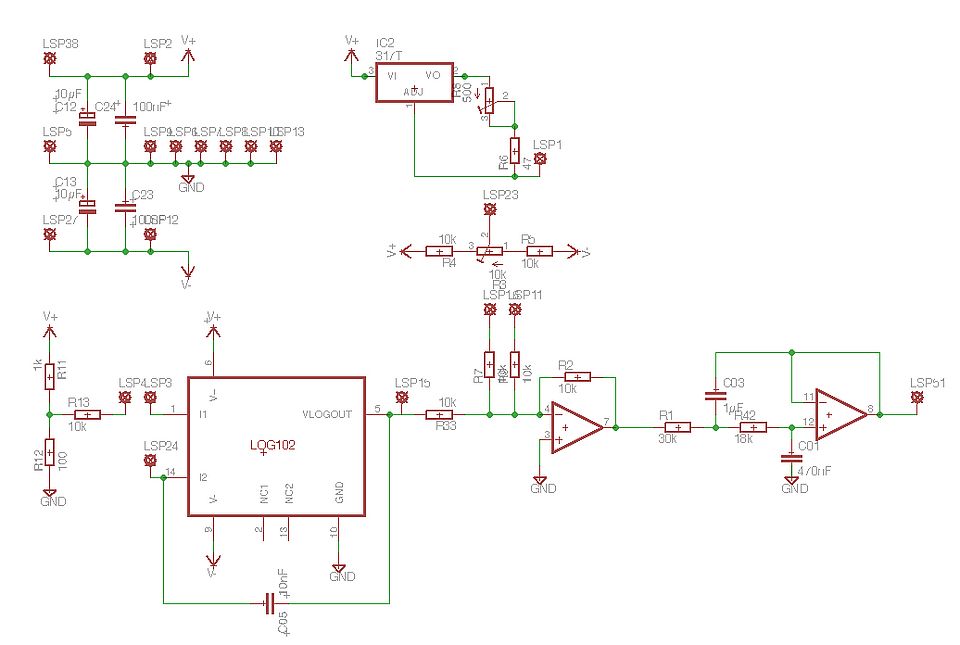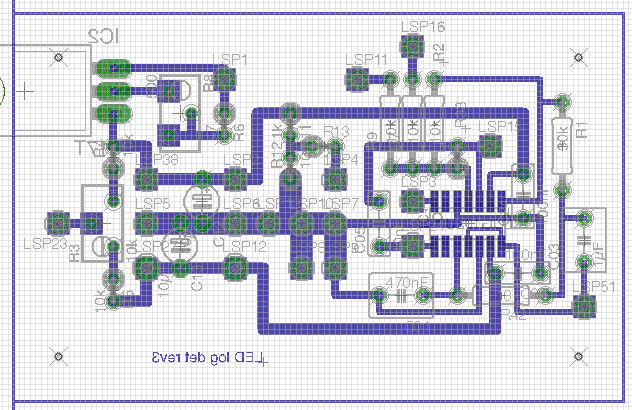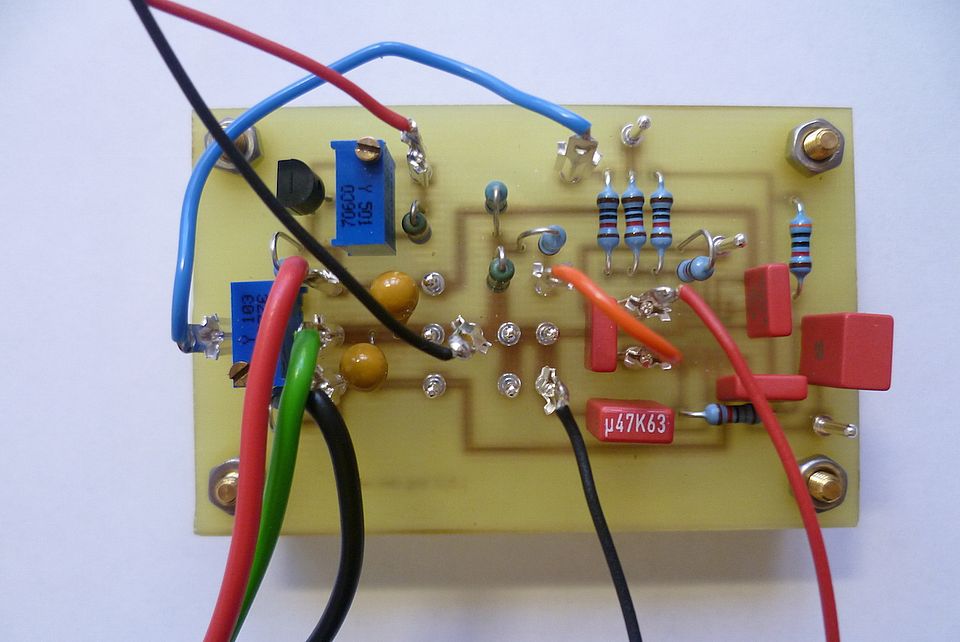Photometric Detector with LED and Photodiode(s)
Absorbance measurements with LEDs can be carried out with a log-ratio amplifier which directly implements Lambert-Beer's law and produces a voltage which is proportional to absorbance from the photocurrent of two photodiodes (one for the signal and one as reference):
Vout = - log(I / Iref )
The reference photodiode allows a compensation for drifts in the intensity of the LED such as those caused by temperature changes.

The photodiodes are connected directly to the two inputs of the LOG102. For non-critical applications the reference photodiode may be omitted and replaced by a constant current source (formed by the T-network of resistors). The operational amplifiers are part of the IC package and are used for zeroing and low-pass filtering of the output. The offset may be created with the on-board trimmer, a panel mounted potentiometer or an external voltage source (as may be available from the data acquisition system), or a combination of these options. The circuitry also includes an adjustable current source (based on IC2, LM317) to drive the LED.

The log-ratio amplifier (LOG102) is only available as SMD and mounted underneath (with a soldering iron fitted with a fine tip). For the rest of the circuitry standard through hole components were used for ease of construction. For small driving currents the LM317 in the TO92 package will be adequate, for higher currents a TO220 version may be used.

